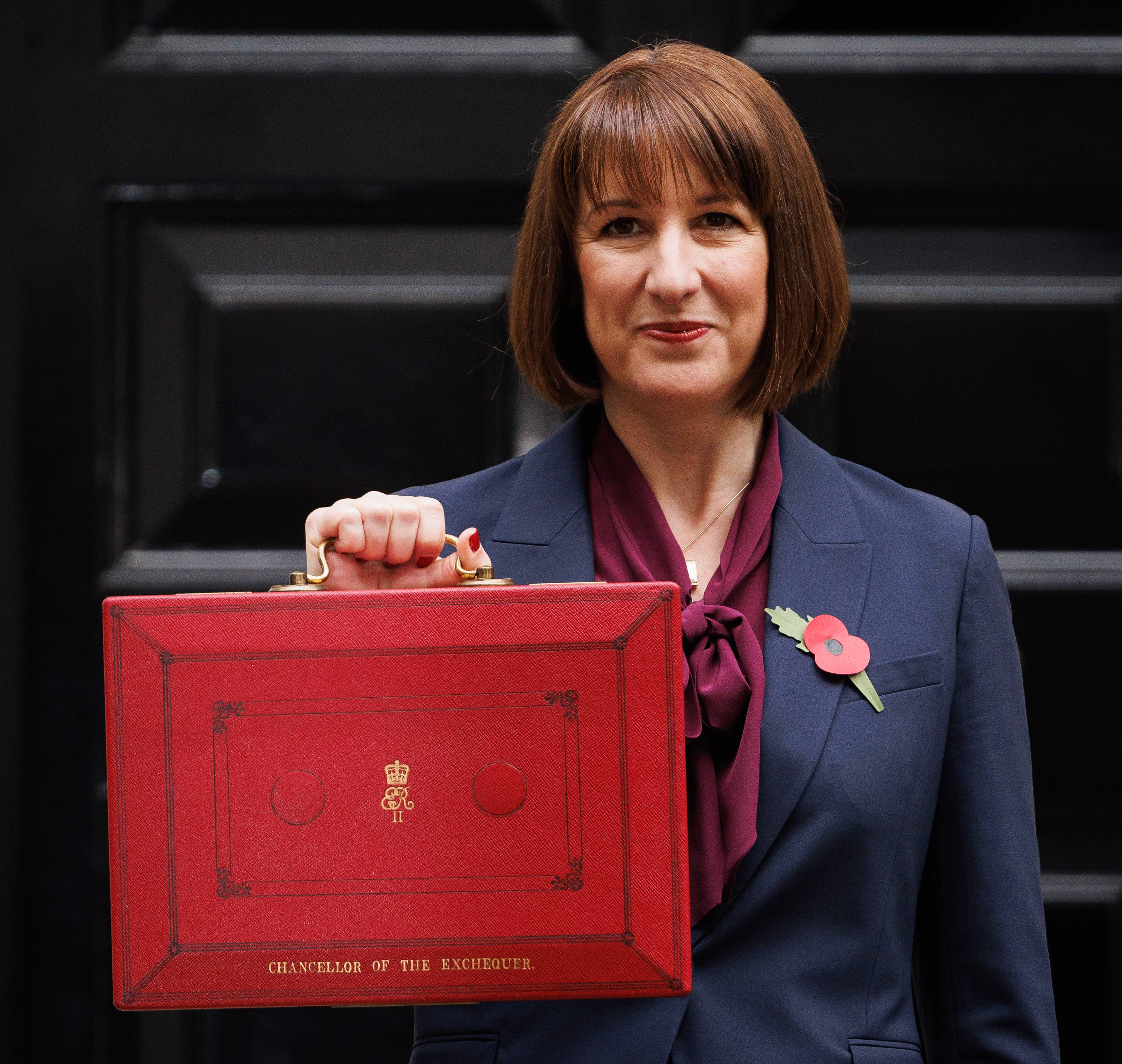Review of the week: Soft landing?
Rather than a slow fade, the American economy produced a surprise surge. Yet with inflation within touching distance of the 2% target, US interest rates may still peak soon.

Article last updated 30 September 2025.
Quick take:
- US GDP unexpectedly accelerated to 2.4% in the second quarter, reigniting debate about whether recession will arrive
- Leading indicators still suggest economic growth will soon start to dip
- The Japanese central bank is slowly unwinding its extraordinarily low-interest-rate policy
America has weathered 2023 better than most people expected. As its inflation has sunk closer to target and its economic growth reaccelerates, US Federal Reserve (Fed) staff have now changed their minds: no recession is imminent this year. Jay Powell, the Chair of the Fed’s monetary policy committee stressed last week that the Fed staff’s forecasts were completely independent of his committee, which actually decides on rate moves.
Powell sidestepped a question about it in the press conference following the Fed’s 25-basis-point increase to the benchmark interest rate, but it seems that the committee is still broadly expecting a mild recession in the coming year. We are a little surprised by the Fed staffers’ change of heart – and, to be clear, they still expect a “noticeable slowdown” in GDP growth later this year, just not enough to send the US economy into reverse. The Fed staff tend to watch the same economic data and trends that we do, so we will be interested to see whether there’s something coming out in the next week that explains the change. We haven’t spotted any leading indicator in the past six weeks that would make us change our own expectation that a mild recession is in the offing, given that most of the effects of the Fed’s past interest rate increases are still to come through.
Of course, data released last week showed that the American economy re-accelerated from an annualised 2% growth in the first quarter to 2.4% in the second quarter. Most economists had expected the economy to decelerate to 1.8%. Yet, importantly, GDP data is a lagging indicator. It tells you about the past, not about what is likely to happen in the future. It’s a huge job gathering, processing and analysing all the information that appraises an economy. So when it’s released, it’s already pretty stale. Not only that, but the first GDP release is a rough estimate that is refined as more data is collected and fed into the analysis, which is why these numbers are often revised in subsequent months. Gross Domestic Product (GDP), which is the sum of everything produced, should be identical to Gross Domestic Income, which captures wages, taxes and profits. Yet because of different methods of estimation they are often out of line during the initial estimates. GDI has been much weaker than GDP of late, and there’s evidence (some provided by those Fed staffers again) that averaging the two often gives you a more accurate picture of what’s really going on. We’ll wait until GDI data is released before delivering a final verdict on Q2.
The US economy wasn’t boosted by household spending though, which has slowed slightly following a punchy start to the year. Instead, the economic fillip was driven by big rises in businesses refilling their warehouses and shelves (inventories) and investing in equipment, tools and buildings. In the round, it showed an economy in rude health. Public spending driven partly by the White House’s big infrastructure investment acts also spurred growth.
We don’t rule out a ‘soft landing’, where higher interest rates dampen inflation without causing a recession. But it’s not what we believe is the most probable scenario. We still think a recession is likely. The more optimistic argument doing the rounds of investors tends to rest on strong employment and ‘excess household savings’ – all the money accumulated during the pandemic and from the pay rises soon after. Some people think these nest eggs could be making people feel more secure and confident, encouraging people to start new businesses, make renovation plans and generally live a bit looser than you would expect when rates are high and the future uncertain.
However, we don’t buy it. The strong household balance sheet argument is much more complex than most people who wield it understand. That’s because when deposits are spent they don’t necessarily disappear from deposits they just transfer to someone else’s deposits (at first the companies’ and then staff and so on and so on). So the question becomes, who is holding these deposits? The savings were always skewed towards higher-income households, but there’s evidence that lower and mid-income households, who tend to spend more of what they earn, have now exhausted their ‘excess’ savings and surveys suggest they no longer feel any better off than before the pandemic.
Another problem is the definition of ‘excess’ savings. The idea of this metric is to estimate how much more people have saved than they normally would. To determine the ‘excess’, you must make an assumption about what is ‘normal’. Difficult at the best of times, let alone just after a pandemic that upended work, lifestyles and economic data. According to Fed staffers, the excess savings built up over the pandemic have all but gone in real terms (once you’ve devalued it because of inflation). In short, there’s a growing body of evidence that support to consumption from this source is running out: rising rates of late payment of debts and a greater share of disposable income being saved, for example.
Consultancy KPMG recently highlighted data that showed rejection rates for vehicle loans hit a record high of 14.2% in June; rejections for other types of loans are close to record levels too. Credit card rates averaged 20.7% in Q2, the highest rate since records began in 1972. The previous peak was 18.9% when interest rates were 8.5%. It’s tough to get more money to spend on big purchases or bridge gaps between income and outgoings. It will be interesting to read the Senior Loan Officers’ survey, which comes out this week, for signs of bank lending conditions. We’ll be surprised if it indicates a loosening of standards: banks usually tighten standards into climbing delinquency rates. In other words, it may be about to get even tougher.
Labour is always the final shoe to drop and recession-deniers are often pointing to super strong labour markets right up to the eve of a slowdown. Sectors always react in sequence: Housing first, then manufacturing, then services – the latter being the bulk of employment. If the coming recession is expected to be mild, it’s possible that labour hoarding will prevent widespread layoffs and therefore in turn avert that very recession. And there’s no doubt that the labour market is still very tight. Initial jobless claims fell to their lowest level since February in the week ended 22 July. Continued claims also fell sharply in the week ended 15 July, dropping to their lowest level since January. But the leading indicators suggest they will start to rise again soon. Not least because corporate profits tend to lead them and they have been falling since last year.
| Index |
1 week |
3 months |
6 months |
1 year |
| FTSE All-Share |
0.3% |
-1.2% |
0.6% |
7.2% |
| FTSE 100 |
0.4% |
-1.4% |
1.3% |
8.8% |
| FTSE 250 |
-0.4% |
-0.7% |
-2.8% |
-0.6% |
| FTSE SmallCap |
1.1% |
2.0% |
-2.1% |
1.1% |
| S&P 500 |
0.9% |
7.8% |
9.1% |
7.9% |
| Euro Stoxx |
0.5% |
1.3% |
5.2% |
23.2% |
| Topix |
2.1% |
5.8% |
4.3% |
9.2% |
| Shanghai SE |
3.5% |
-6.9% |
-8.8% |
-11.4% |
| FTSE Emerging |
2.9% |
5.3% |
-2.8% |
1.4% |
Source: EIKON, data sterling total return to 28 July
| These figures refer to past performance, which isn’t a reliable indicator of future returns. The value of investments and the income from them may go down as well as up and you may not get back what you originally invested. |
Nearing peak rates
Here in the UK, recent economic data is the complete opposite of the US. Our inflation is much higher than we would hope and our economic growth is paltry at just 0.4% annualised. Unlike the Fed, which is expected to pause its regimen of interest rate hikes, the Bank of England (BoE) is forecast to deliver another 25bps this week. That would take the benchmark rate to 5.25%, a 15-year high, and the BoE is expected to continue from there until it tops 6%. There’s a solid chunk of investors who believe the BoE might hike rates by 50bps this week. We think 25bps is most likely and still believe that prices will start to fall rapidly from here, especially as electricity and gas price falls start to work on the numbers.
Across the Channel, the European Central Bank (ECB) left its future policy options wide open after hiking its benchmark interest rates by 25bps to an overnight deposit rate of 3.75% and a main refinancing rate of 4.25% (the cost of banks borrowing for short periods from the ECB with pledged bonds as collateral). ECB President Christine Lagarde said that the ECB “might hike or we might hold” at its next meeting and that this could vary from one meeting to another. In addition, she positioned herself firmly against cutting in September with a “definite no”. Regarding potential trade-offs between inflation and unemployment, Lagarde reiterated that inflation is the ECB’s only goal. So the recession that we believe is taking hold in Europe isn’t swaying the singly mandated ECB at the moment. Our take is that the ECB is likely very near and possibly at its interest-rate peak. The end of a central bank rate tightening cycle isn’t necessarily a buy signal for risk assets when an economic downturn is ongoing. And that definitely applies to Europe.
Meanwhile, interesting developments are afoot in Japan. Often forgotten or outright dismissed, Japan is an important part of the global economy – it’s the third-largest economy, depending on how you’re measuring it. For many, many years, it has had a deflation problem (i.e. prices generally fall over time, rather than rise). Because of this, it has spent the last decade or so pumping money into jumpstarting its economy and flipping it to an inflationary dynamic that fosters economic growth. It has done this by keeping its interest rate extremely low – since 2016 it has stayed rooted at -0.1%. But it went further than that by anchoring its bond yields to extreme lows as well. This was called ‘yield curve control’ and it worked by the Bank of Japan (BoJ) buying massive amounts of Japanese government bonds, which kept the prices high and therefore the yield low. The ceiling for the 10-year bond yield was 0.5%, but at last week’s monetary policy meeting the BoJ increased it to a range between 0.5% and 1.0%. While a seemingly small amount, this doubling of the rate is a pretty hefty move. The bank also changed some of the language describing its policy, giving it more flexibility to end or adjust it in the future.
The reason for the shift, which has been speculated on since the beginning of the year, is that Japanese inflation has continued to surprise on the upside in recent months. June’s CPI reading of 3.3% outpaced the US’s (which was 3.0%) for the first time in eight years. Even more surprising is the stickiness of inflation excluding fresh food and energy, which has run above 4% for three consecutive months – the fastest pace in more than four decades. But the BoJ is yet to be convinced that inflation will remain at or above its target two or three years from now. Governor Kazuo Ueda remarked in mid-July that “there is still a distance to sustainably and stably achieving our 2% inflation target.” It has been careful to stress that it wants to see evidence that wage gains are outpacing inflation before it declares victory. Base pay rose 1.8% year-on-year in May, the fastest pace in more than 28 years. Japanese workers are still seeing their incomes fall in real terms.
Global investors like us are thinking about Japanese monetary policy for two primary reasons: will an end to their yield curve control create volatility in global bond markets more broadly as well as yen exchange rates? And will tighter policy put an end to the strong performance of the Japanese stock market versus the rest of the world?
On the former, there is a high degree of correlation between G7 nations’ bond yields, as many investors and treasurers are able to allocate globally, but we noted relatively little volatility in Japanese or global markets around the announcement. Furthermore, some strategists believe that any volatility from an end to the BoJ’s extraordinarily loose monetary policy may only be short term. On the second point, our preference for Japanese equities is not predicated on ultra-loose policy continuing ad infinitum. There have been lots of positive developments on economic growth, companies’ focus on improving business performance and investor returns and bolstering company governance that give us confidence in Japan’s ability to turn a corner.
Our Review of the Week is going on holiday for August, we’ll be back writing to you on 4 September. We hope you have a wonderful summer.
If you have any questions or comments, or if there’s anything you would like to see covered here, please get in touch by emailing review@rathbones.com. We’d love to hear from you.



